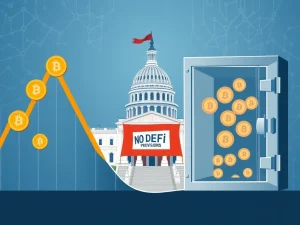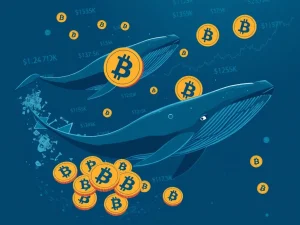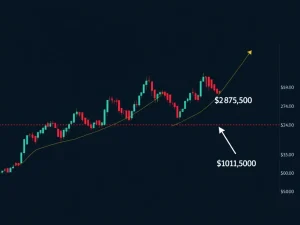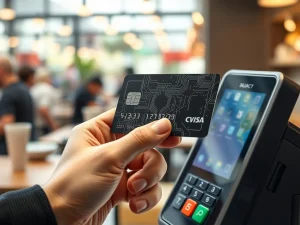Avalanche Blockchain Unveils Revolutionary Future for Autonomous Robotaxi Infrastructure
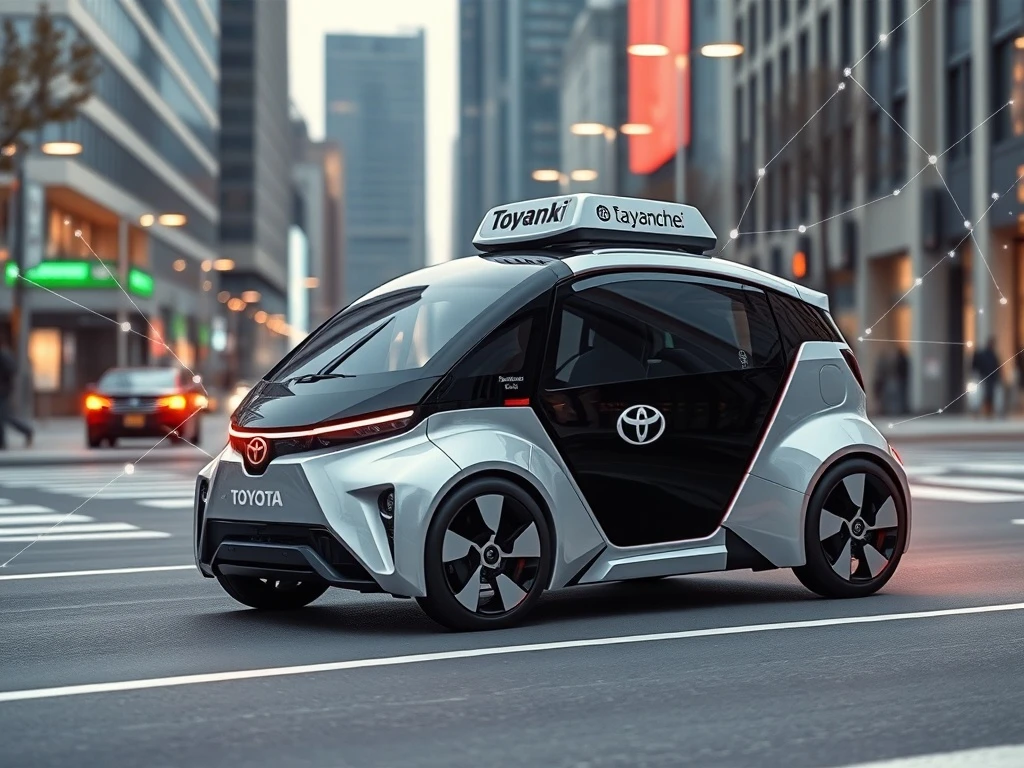
The convergence of cutting-edge blockchain technology and the future of transportation is upon us. Imagine a world where autonomous vehicles operate seamlessly, powered by transparent and efficient decentralized networks. This vision is rapidly becoming a reality, thanks to a groundbreaking collaboration between Avalanche and Toyota Blockchain Lab. They are actively designing the essential infrastructure for self-deployed, autonomous robotaxi fleets, marking a significant leap forward for the entire industry. This partnership highlights another compelling use case for blockchain technology, promising a future of tokenized mobility and innovative onchain business models.
Avalanche Blockchain and Toyota’s Vision for Future Mobility
The **Avalanche blockchain** is at the forefront of a transformative initiative with Toyota Blockchain Lab. Together, they are meticulously planning the foundational infrastructure required for future autonomous robotaxi fleets. This collaboration underscores blockchain’s increasing relevance in the transportation sector. Specifically, Avalanche and Toyota are researching the development of a new blockchain layer. This layer aims to “orchestrate trust and unlock mobility’s value” through a specialized intermediary network. They call this innovative system the Mobility Orchestration Network (MON).
Built upon Avalanche’s robust multichain infrastructure and Interchain Messaging (ICM) capabilities, the proof-of-concept for MON is ambitious. It seeks to enable secure data sharing across various critical functions. These include vehicle financing, efficient ride-sharing services, comprehensive insurance, and transparent carbon credit tracking. Furthermore, the network aims to streamline ownership transfers for secondary markets, enhancing liquidity and accessibility. This initiative represents a profound shift in how we conceive and manage transportation assets.
The Mobility Orchestration Network (MON) Explained
The forthcoming MON network, a brainchild of Avalanche and **Toyota blockchain** Lab, will unlock numerous emerging use cases. Roi Hirata, head of Japan at Ava Labs, the company behind the Avalanche Network, confirms this. He emphasizes the future implementation of fully autonomous robotaxi fleets as a primary objective. “Robotaxis are one of the most interesting emerging use cases for the network,” Hirata stated during Crypto News Insights’s Chain Reaction daily live X spaces show. He elaborated on the comprehensive nature of the proposed system.
This network provides a decentralized framework for managing complex mobility services. It leverages blockchain’s inherent security and transparency. Users can access various services securely and efficiently. Imagine a future where every aspect of a robotaxi’s lifecycle, from its initial funding to its operational data and eventual resale, lives on a tamper-proof ledger. This level of integration promises unprecedented efficiency and trust in the mobility sector. The MON network is designed to be the backbone for this sophisticated ecosystem.

Powering Onchain Business Models for Robotaxis
The vision extends beyond mere operational efficiency; it encompasses entirely new **onchain business models**. Hirata highlighted the potential for innovative financing and ownership structures. “The payments, the leasing, you can actually start your own robotaxi services by raising funds onchain, with some kind of security token system,” he explained. This revolutionary approach means investors can raise capital and track their robotaxis directly via the blockchain. Consequently, the entire business model can be constructed onchain “from scratch,” offering unparalleled transparency and accessibility.
This capability fundamentally changes how capital is raised and managed for mobility services. Tokenized securities could represent fractional ownership of robotaxi fleets. Investors could participate in the revenue streams generated by these autonomous vehicles. Moreover, the blockchain would provide an immutable record of performance, maintenance, and financial transactions. This level of verifiable data could attract a wider range of investors, democratizing access to the burgeoning autonomous vehicle market. The **robotaxi infrastructure** benefits immensely from this transparent and efficient financial backbone.
Overcoming Hurdles: Regulation and Manufacturing
Realizing the full potential of autonomous robotaxi fleets requires significant collaboration. Regulators and manufacturers must come on board to fully actualize this future vision. Manufacturers, in particular, present a more challenging party to onboard. Their integration is crucial for widespread adoption. Regulators and carmakers need to work together to enable official recordkeeping via blockchain ledgers. This collaboration is essential for use cases like onchain ownership transfers, as Ava Labs’ Hirata noted. “There’s always an official record in different countries, different formats,” he added. “So having that and the manufacturer working together on a blockchain is the most key task that we have to tackle.”
Harmonizing diverse national regulations presents a complex challenge. Different countries maintain varying standards for vehicle registration and ownership. Integrating these disparate systems onto a unified blockchain requires extensive cooperation. Furthermore, car manufacturers must adapt their existing processes to incorporate blockchain-based record-keeping. This transition demands significant investment and a willingness to innovate. Overcoming these hurdles is paramount for the widespread deployment of advanced **robotaxi infrastructure**.
The Broader Landscape of Mobility Tokenization
The partnership between Toyota and Avalanche signals a growing trend: **mobility tokenization**. This concept involves representing real-world mobility assets and services as digital tokens on a blockchain. Following this latest proof-of-concept, tokenizing mobility may emerge as the next key trend for cryptocurrency investors. Tracking vehicles and their associated data remains challenging with traditional systems. Future use cases will require “lots of systems” and decentralized applications to support comprehensive tokenization. This includes everything from vehicle ownership to ride-sharing credits and even usage-based insurance policies.
The benefits of mobility tokenization are extensive. It offers enhanced transparency, reduced fraud, and increased efficiency in transactions. Furthermore, it can unlock new revenue streams and business models for individuals and corporations alike. Imagine owning a fraction of a shared autonomous vehicle fleet, earning passive income from its operations. This future is closer than ever, driven by the innovations spearheaded by the **Avalanche blockchain** and its partners. This technology enables a more fluid and interconnected transportation ecosystem.
Real-World Assets (RWAs) on Avalanche
The **Avalanche blockchain** is also becoming a preferred platform for other firms building on its real-world asset (RWA) tokenization capabilities. This trend further validates the network’s strength in bridging traditional finance with decentralized technology. For example, Grove, an institutional-grade credit protocol, targets significant tokenized RWAs on the Avalanche network. Backed by Steakhouse Financial, Grove aims for $250 million worth of tokenized RWAs. This ambitious project is in partnership with the $373 billion asset manager Janus Henderson, as Crypto News Insights reported on July 28. Such collaborations demonstrate the growing institutional confidence in blockchain solutions.
These developments illustrate a broader movement within the cryptocurrency space. Blockchain technology is moving beyond purely digital assets to encompass tangible, real-world value. Tokenizing RWAs allows for greater liquidity, fractional ownership, and more efficient capital markets. It represents a powerful evolution for decentralized finance (DeFi), bringing mainstream assets onto the blockchain. Consequently, Avalanche’s robust infrastructure makes it an ideal choice for these complex and high-value applications, including the intricate requirements of **robotaxi infrastructure**.
The Path Ahead for Decentralized Transportation
The collaboration between Avalanche and Toyota Blockchain Lab represents a significant milestone. They are laying the groundwork for a future where autonomous robotaxis are not just a technological marvel, but also a cornerstone of decentralized commerce. The Mobility Orchestration Network (MON) promises to revolutionize how we manage, finance, and interact with transportation services. This initiative could usher in an era of unprecedented efficiency, transparency, and accessibility in mobility. The vision extends to fully decentralized **onchain business models** that could transform entire industries.
While challenges remain, particularly in regulatory alignment and manufacturer integration, the momentum is undeniable. The potential for **mobility tokenization** to unlock new economic opportunities is vast. As more firms leverage the **Avalanche blockchain** for real-world asset tokenization, the foundation for a truly decentralized transportation ecosystem strengthens. The future of autonomous travel, powered by blockchain, is rapidly approaching, promising a more connected and efficient world.






